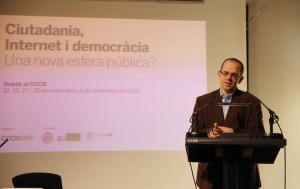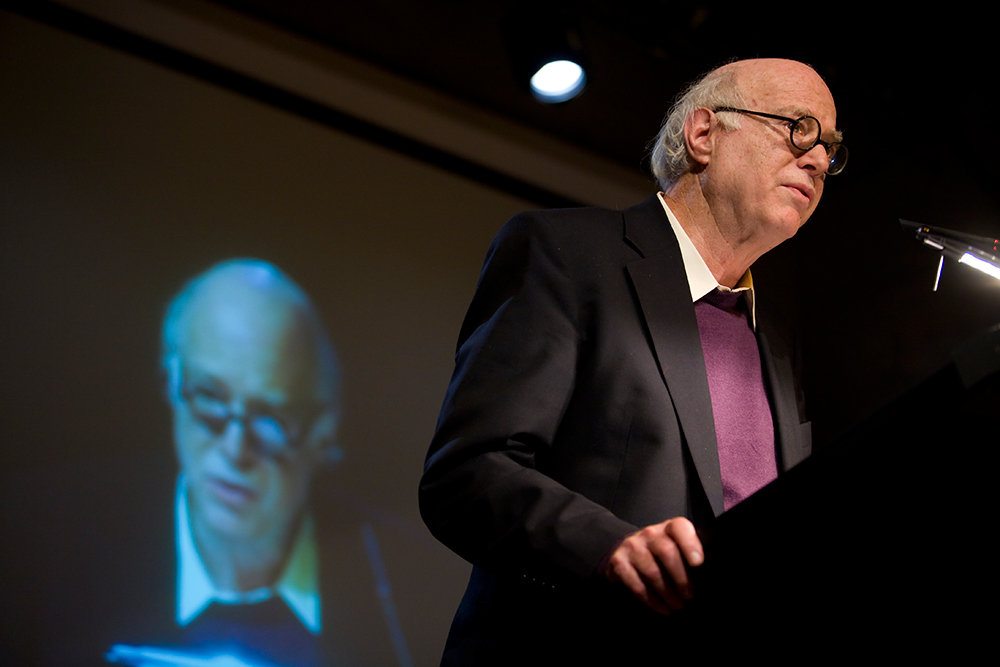The ICREA-CCCB debates on “The Brain” end on Tuesday 1 April with the lecture titled “Lessons from Brain Lesions”, which is to be given by the University of Barcelona researcher Ruth de Diego. We have asked her to explain in advance why study of behaviour patterns and deficits caused by these lesions is useful in neuroscientific research.

The ICREA researcher Ruth de Diego
You are a specialist in psycholinguistics and cognitive neuroscience. Could you tell us what is studied in these two disciplines?
First of all, I am interested in psycholinguistics, by which I mean knowing how we come to understand language. While I was writing my thesis I was attracted to the neurobiological aspects of language and, in particular, how brain lesions can affect our understanding and speaking skills. When we come into contact with a new language, our brain gets to work to extract the regularities of that language, even if we don’t understand a word of it. If we land in Japan, for example, and start hearing this strange language, our brain will start to derive all kinds of statistical information, for example which sounds are most frequent, which ones tend to make sequences, and so on. Studying language is interesting because this is what most identifies us as human beings and because language governs our social relations. Hence, a brain lesion that affects one’s ability to speak greatly limits one’s quality of life.
What is the present situation of brain research?
In the past ten years there has been a second big spike in research and the amount of information we have acquired, in this case with a lot of studies on the brain’s structure and connectedness. Previously, in the more traditional approach, the brain was studied in a way that strongly emphasised localisation so efforts were made to discover which part of the brain carried out such and such a function. However, we realised that we couldn’t talk about isolated zones of the brain performing specific functions but, rather, we had to think about networks of different parts of the brain functioning synchronically, or working together and in a coordinated fashion to perform a certain function. Moreover, we now know that the brain is much more adaptable than we previously thought and that when there is a lesion it has an incredible capacity to reorganise itself and restore connections.
Why is studying patients with brain lesions useful?
It is useful because, by comparing different situations, we can discover a lot about the brain and its functions. Imagine a person who has a brain tumour that has taken a year to develop. In that brain the functioning is not exactly the same as that in a person who has not suffered a lesion because of this adaptability I just mentioned: the patient’s brain has been undergoing a process of restructuration in order to adapt to the pathology.
We use transcranial magnetic stimulation with a device that is brought up close to the outside of the head and, by means of a very powerful magnetic field, it changes the functioning of the neurones in the region it is nearest to by inhibiting or stimulating them. This stimulation induces a lesion virtually. This only lasts a certain time, from a few seconds to a quarter of an hour and, during that time, the healthy person acts as if he or she is suffering from a lesion in that part of the brain. Comparing a simulated lesion in a healthy person, whose brain structure is maintained without alterations, with someone else who has a long-term brain lesion, and who therefore does have alterations, makes it possible for us to discover many things about brain structure and function as well as about specific disorders.
What kinds of brain lesions have you studied?
One of the illnesses we have studied is Huntington’s disease, which is quite a rare genetic disorder with a low incidence among the population. In its early stages, Huntington’s disease quite specifically affects a particular subcortical structure, a key area of the brain that has many connections with different parts of the cortex and, accordingly, many associated functions. We also study aphasia, a disorder that affects language comprehension because of a brain lesion. People with aphasia can see the image of a pear and say “banana” for example.
What is the use of studying these diseases?
Studying the whys and wherefores of such behaviour has many uses such as the rehabilitation of patients. Imagine that there are two zones of the brain connected in two ways. As a result of the adaptability I mentioned, if you have a lesion that affects one of them the other one, the intact one, will work to recover its function as much as possible. If we know that one way is obstructed but that the other neuronal network is operating, we can use and reinforce this latter way and design a particular kind of rehabilitation. I’ll give you an example. We have a study showing that there are two main zones of language processing, one of which is more concerned with motor functions like production and speech while the other is more concerned with perception and understanding of language, which is to say it’s more auditory. These two areas are joined by a bundle of connections and it seems that this connection, this ability to transform what we are listening to into a motor sequence, is very important with regard to learning new words. By this I mean that this process of repeating new words, listening to them, hearing them and pronouncing them ourselves – or this loop – enables us to learn. If a patient’s bundle of connections is broken and he or she can’t repeat the words in order to assimilate them, we can help him or her to learn words by turning to another connection that exists, this time a more semantic one. If this other path is taken it’s not possible to repeat words in order to assimilate them but we can accede to the word by giving it sense, connecting the motor and auditory parts of the brain through the structures of meaning. If I train the patient using this method there is a better chance that he or she will understand the word this way than through the obstructed path of repetition.
Would this be similar to mnemonics or the acronyms that are used for studying purposes to assimilate concepts on the basis of unrelated ideas of phrases?
Yes, it would be similar to that. Moreover, all of this has specific uses in the treatment of these disorders because knowing about the alterations in brain structure and functions in patients with Huntington’s disease, for example, enables us to detect and understand individual differences in patients suffering from this disorder. In the case of a clinical trial, we can divide the patients up according to the connections that are affected in each one of them and, by thus grouping them, a much more specific and effective treatment can be offered than if we didn’t distinguish between the different degrees of brain lesions affecting patients.










